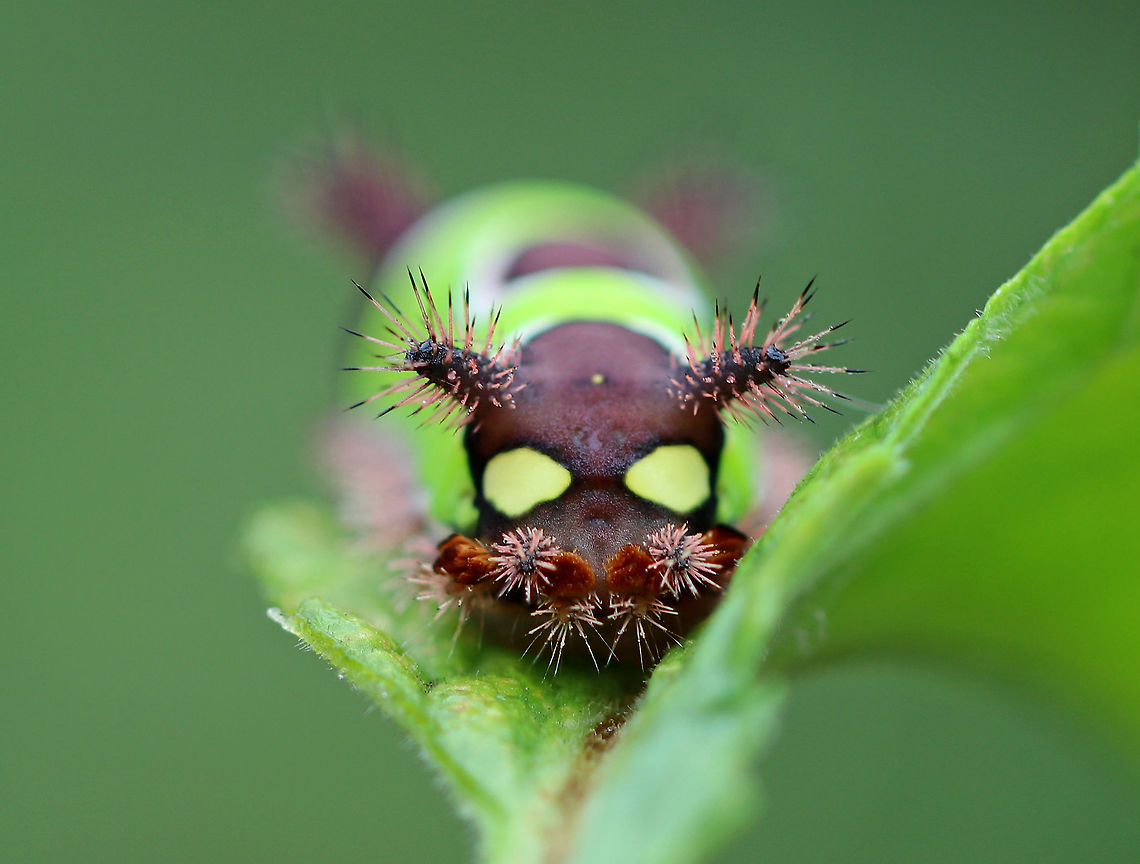 Promoted
Promoted
Saddleback Caterpillar - Acharia stimulea
I was SO excited to find this caterpillar in my mother's garden this weekend!
The caterpillars have a truncated, slug-like body that is not typical of other lepidopterans. The prolegs are concealed under the ventral surface of the body. They have aposematic coloring with dark brown anterior and posterior ends with a contrasting bright green pattern blanketing the dorsal midsection.
It is a medically significant insect due to the presence of venomous, urticating spines and hairs! These hairs/spines secrete an irritating venom that causes a painful, swollen rash and nausea in humans.
Habitat: Spotted in a rural, backyard garden.
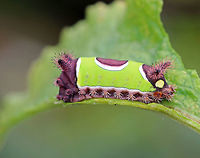
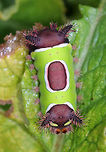
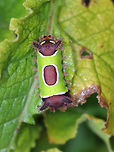
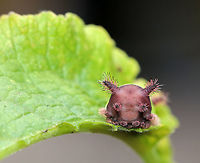
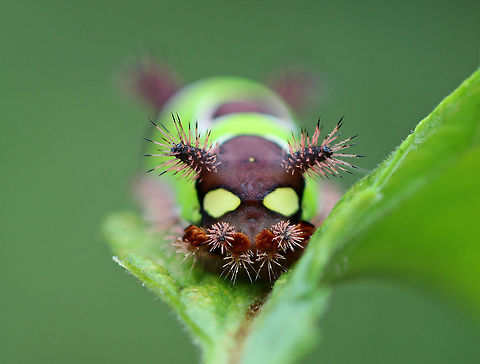
The saddleback caterpillar, ''Acharia stimulea'' , is the larva of a species of moth native to eastern North America. The species belongs to the family of slug caterpillars, Limacodidae.

comments (7)
The larval phase of slug moths is well-known and very distinctive! Called saddleback caterpillars (Acharia stimulea), they have a large range in the eastern United States. They display a vibrant, aposematic lime-green and brown color pattern that advertises their toxicity. Plus, they have large eyespots on the rear end of their bodies. These markings resemble a face, which may confuse or deter predators.
If their warning colors and butt-face don’t scare off predators, this next feature may do the trick: the fleshy tubercles on the ends of their bodies are covered in large, venomous spines. When broken, the venom gets released into the attacking predator (or unsuspecting gardener). The venom can cause a range of unpleasant and painful symptoms, which make this caterpillar a medically significant species.
To further enhance their defensive strategies, saddleback caterpillars use suckers and mucus to help them adhere to surfaces. Instead of having normal crochets on their legs that hook into surfaces, they have suckers. Add in some mucus that gets secreted from its pores, and you end up with a caterpillar that can stay firmly attached to a plant while sticking its spines in an attacker.
Moral of the story: if you see this caterpillar, look but don’t touch. This is actually a good practice when dealing with caterpillars, in general; contact with many species can cause minor dermatitis, more serious allergic reactions, and some can even be deadly. {Spotted In Rhode Island, USA by JungleDragon moderator, Christine Young} #JungleDragon #slugmoth #Saddlebackcaterpillar #Achariastimulea
https://www.facebook.com/jungledragonwildlife
Posted 4 years ago